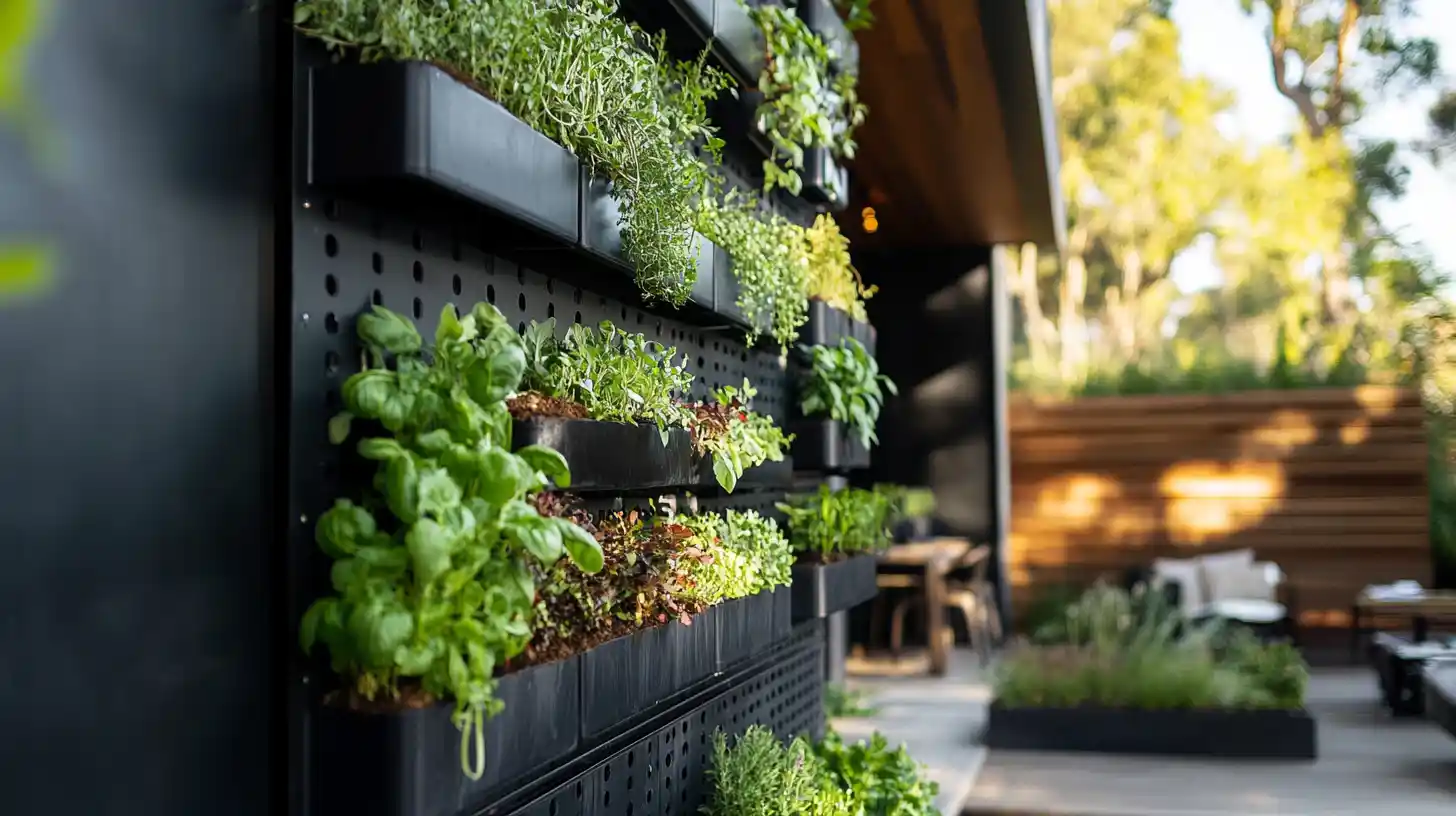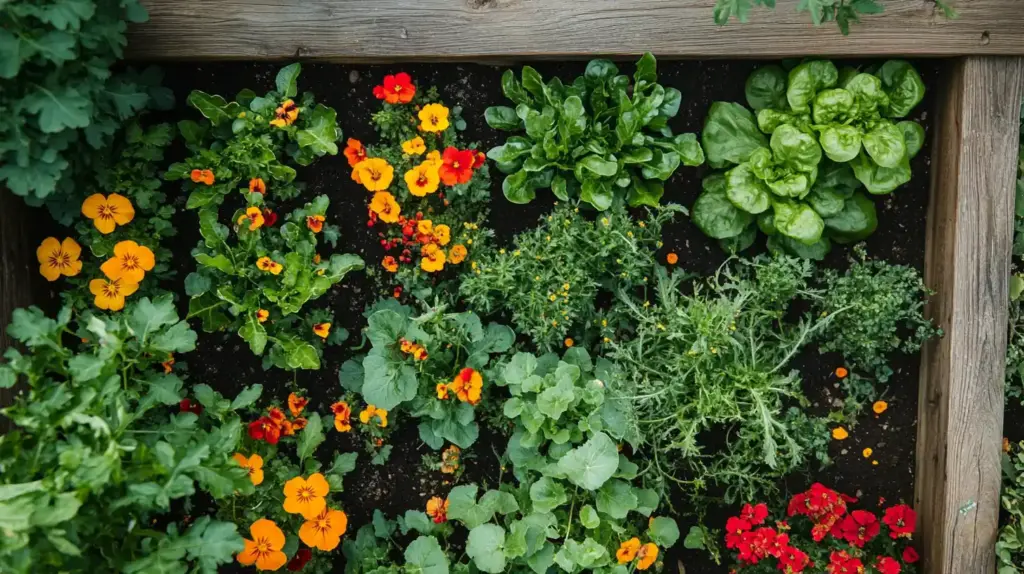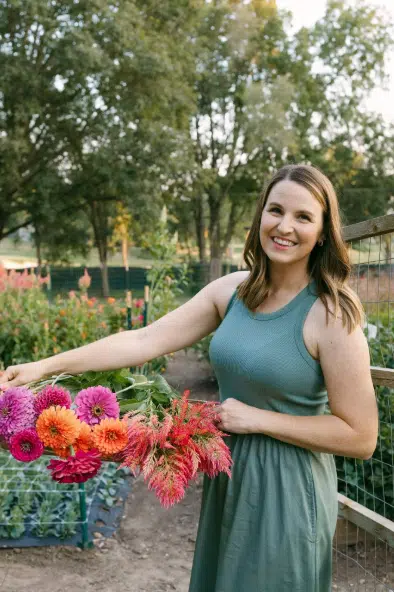Transforming a tight outdoor space into a thriving edible oasis is easier than you might think. With the right vegetable garden ideas, even the smallest balconies, patios, or backyard corners can burst with fresh, homegrown produce. By focusing on smart, space-saving designs and creative layouts, you can make the most of every square inch—without compromising on beauty or bounty. Whether you’re a seasoned gardener or just starting your green journey, these ten inventive concepts will help you cultivate a lush and productive garden in compact areas.
Table of Contents
1. Companion Planting Techniques
One of the smartest vegetable garden ideas for small spaces is companion planting—a natural way to boost plant health and garden productivity. By strategically pairing plants that benefit one another, you can deter pests, enhance growth, and make the most of limited space. For instance, basil helps repel aphids from tomatoes, while marigolds not only brighten up your beds but also discourage nematodes and other soil pests.
Mixing flowers and vegetables also adds visual interest and biodiversity to your garden. This technique isn’t just practical—it’s beautiful too. Consider planting nasturtiums with squash or interweaving colorful calendula with lettuce for a vibrant, multi-functional layout.
2. Vertical Gardening Solutions
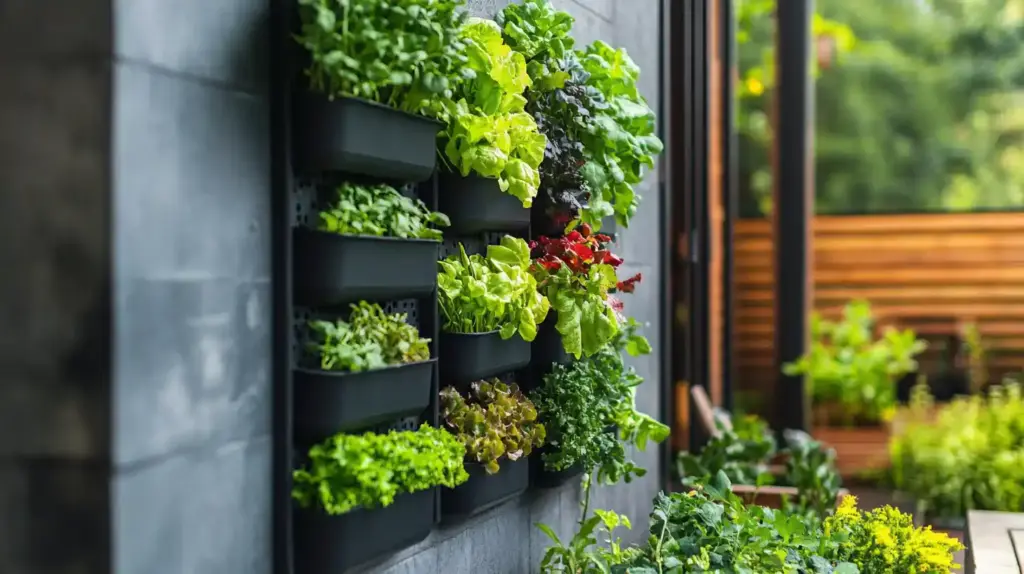
When ground space is tight, think upward! One of the most effective vegetable garden ideas for maximizing small spaces is vertical gardening. This method uses walls, fences, trellises, or hanging containers to grow your plants vertically, freeing up valuable square footage for other crops or decorative elements.
Herbs like thyme, basil, and parsley thrive in hanging pots, while climbing vegetables such as peas, pole beans, and cucumbers are perfect for trellised support. Wall-mounted planters and tiered shelves can turn a plain patio wall into a green, edible canvas. Not only does this approach save space, but it also improves airflow and light exposure for healthier plants.
3. Raised Bed Garden Layout
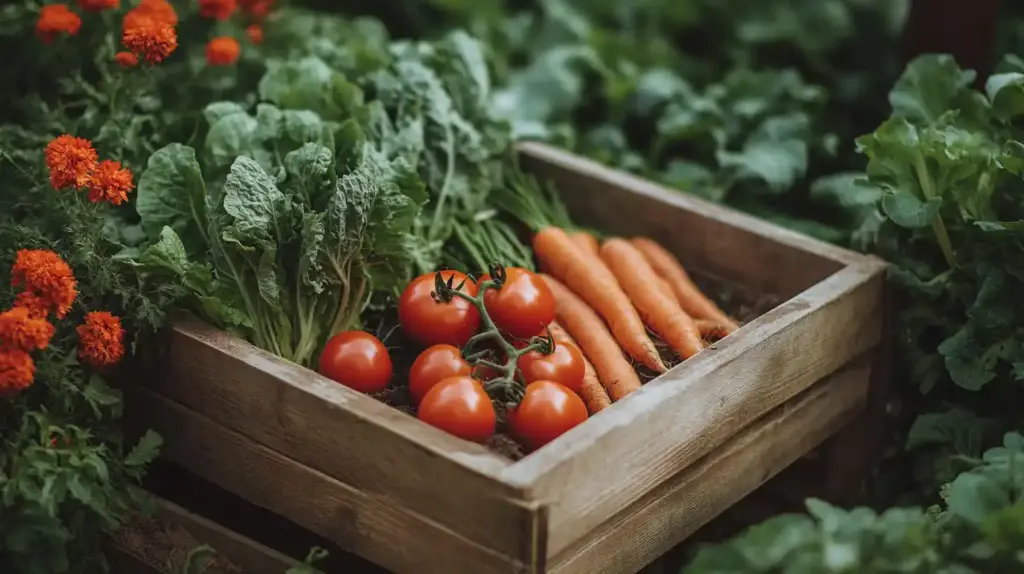
If you’re working with limited space but want to keep your garden organized and efficient, raised beds are one of the most reliable vegetable garden ideas. These structured beds help define your growing space, making it easier to manage soil quality, drainage, and plant placement.
Raised beds can be customized to fit your space—whether you’re working with a narrow side yard or a small backyard nook. They allow for closer spacing of plants, which increases productivity per square foot. Plus, they reduce soil compaction and make maintenance tasks like weeding and watering more accessible. Add a border of edible flowers for a touch of charm and function.
4. Herb Spiral Garden Design
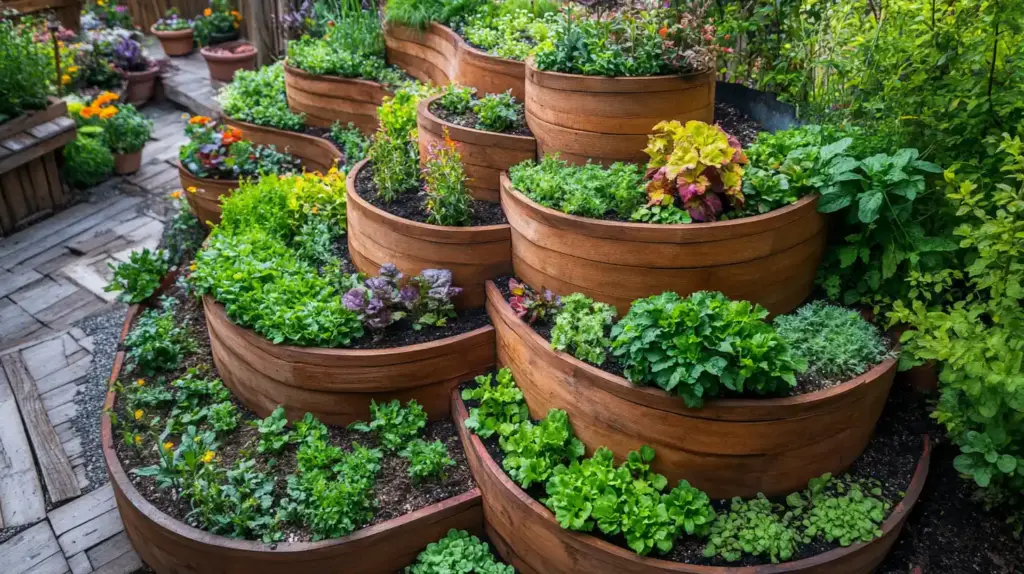
For a unique and artistic twist on traditional layouts, an herb spiral is one of the most innovative vegetable garden ideas to consider. This raised, spiral-shaped bed creates natural microclimates, allowing you to grow a diverse range of herbs and small vegetables in a compact footprint.
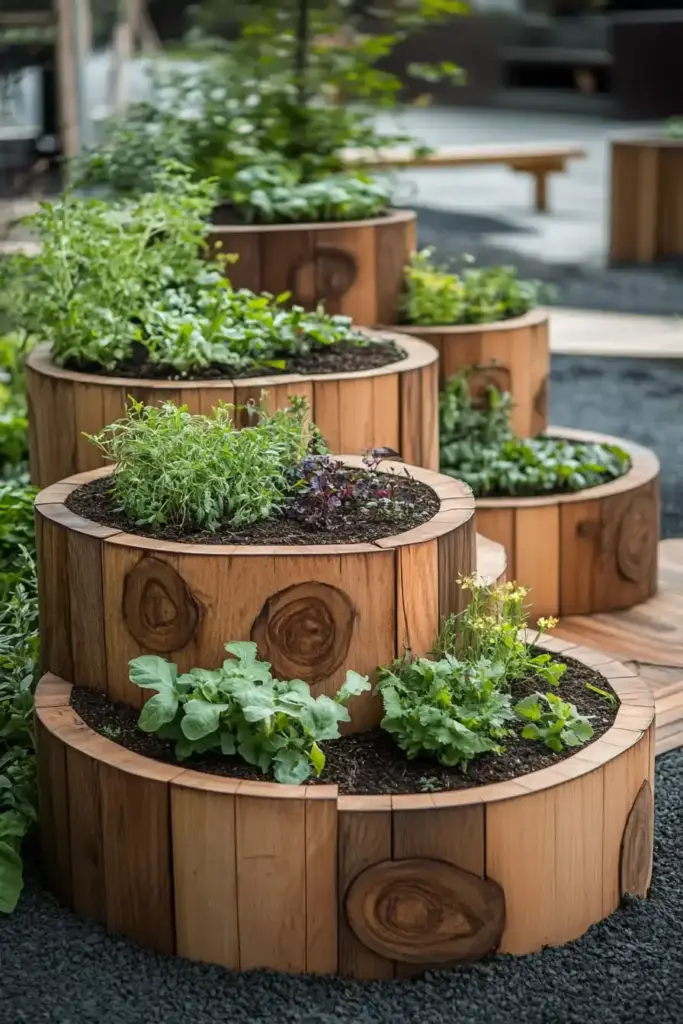
The design places sun-loving plants like rosemary and oregano at the top, while moisture-loving varieties like mint and parsley thrive closer to the base. This not only maximizes vertical space but also adds visual interest to your garden. Built with bricks, stones, or recycled materials, an herb spiral is both eco-friendly and practical—a standout feature in any small garden.
5. Edible Landscaping Ideas
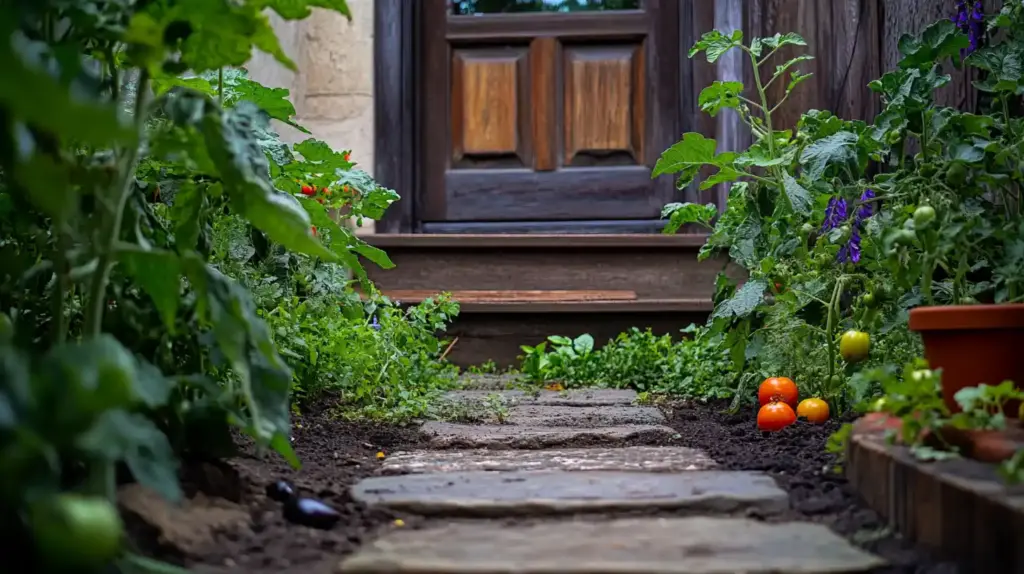
Blending form with function, edible landscaping is one of the most stylish and sustainable vegetable garden ideas for compact spaces. Instead of confining your veggies to traditional rows, you can weave them into your ornamental beds, borders, and pathways to create a productive yet visually stunning garden.
Imagine colorful Swiss chard alongside marigolds, or kale forming a lush border around your flowerbeds. Even fruiting plants like cherry tomatoes or peppers can double as eye-catching accents. This approach not only saves space but also enhances your garden’s aesthetic, attracting pollinators and creating a dynamic, food-producing landscape that’s as beautiful as it is practical.
6. Container Gardening for Urban Spaces
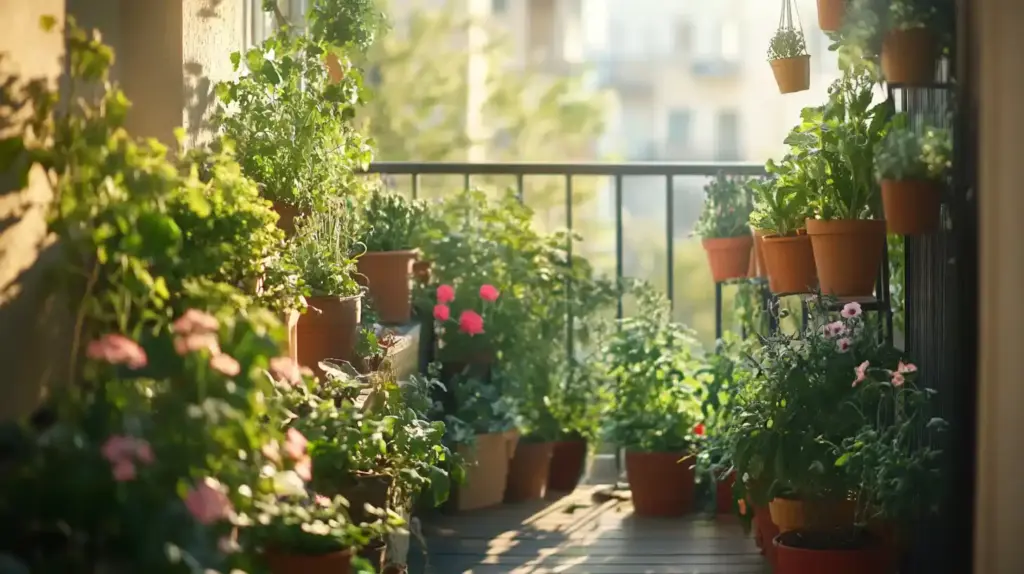
Living in a city doesn’t mean you have to miss out on fresh produce—vegetable garden ideas like container gardening make growing food in urban settings easy and accessible. Whether you have a balcony, rooftop, or small patio, pots and planters let you grow vegetables almost anywhere.
Containers offer flexibility in placement and crop rotation, while also allowing better control over soil quality and drainage. Choose compact or dwarf varieties of tomatoes, peppers, or eggplants for best results. You can even group containers creatively by color, height, or type to make your mini garden feel cohesive and inviting, no matter how small your space.
7. Colorful Vegetable Borders
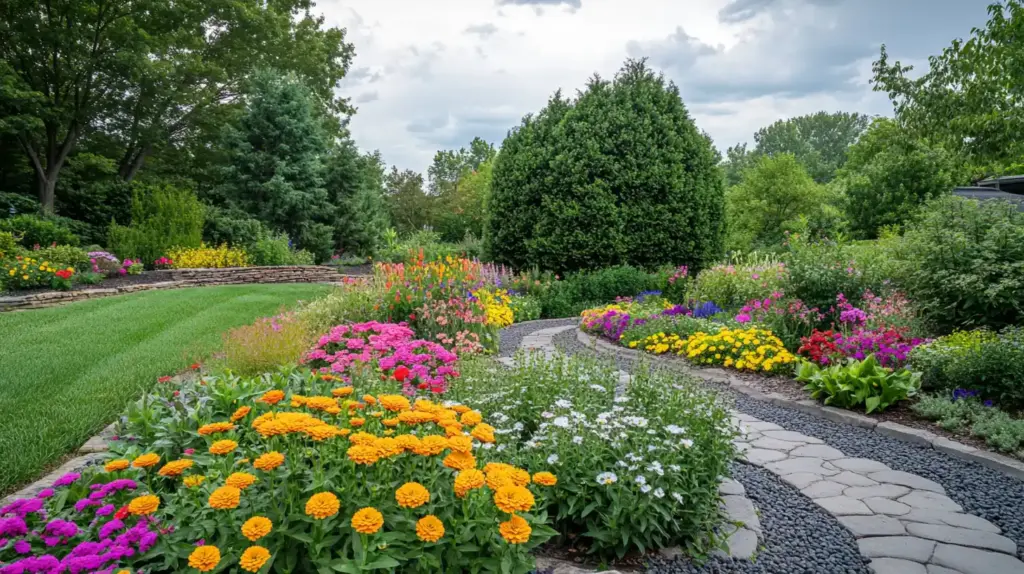
Adding a splash of color around your beds is not just decorative—it’s one of the most effective and cheerful vegetable garden ideas. Planting vibrant vegetables and flowering companions along the edges of your garden helps define the space while attracting helpful pollinators like bees and butterflies.
Rainbow chard, purple basil, and bright orange nasturtiums are great examples of plants that provide both function and flair. These borders can also act as natural pest deterrents, reducing the need for chemicals. With the right mix of texture, height, and color, your vegetable borders can elevate the entire look of your garden while boosting productivity.
8. Garden Pathways for Accessibility
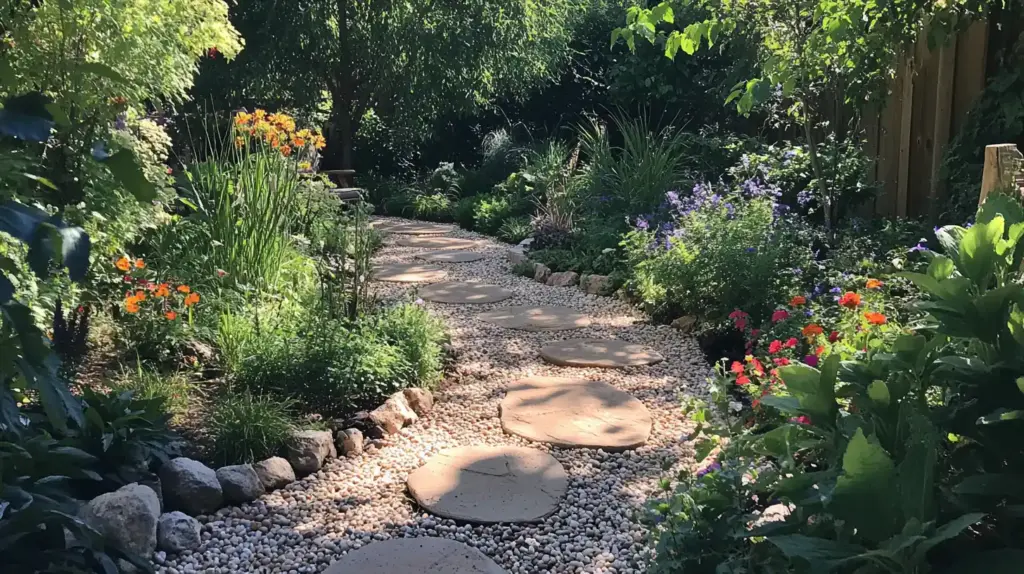
Designing clear, functional pathways is one of the most practical yet often overlooked vegetable garden ideas for small spaces. Well-placed paths ensure every corner of your garden is easy to reach, making planting, harvesting, and maintenance a breeze—especially in raised beds or tight layouts.
Use stable, permeable materials like gravel, brick, wood chips, or pavers to create smooth walkways that reduce soil compaction and improve drainage. For inclusive gardening, opt for wider paths that accommodate mobility aids and keep surfaces level. Not only do pathways enhance accessibility, but they also add structure and visual balance to your overall garden design.
9. Shade Gardening for Cool Vegetables
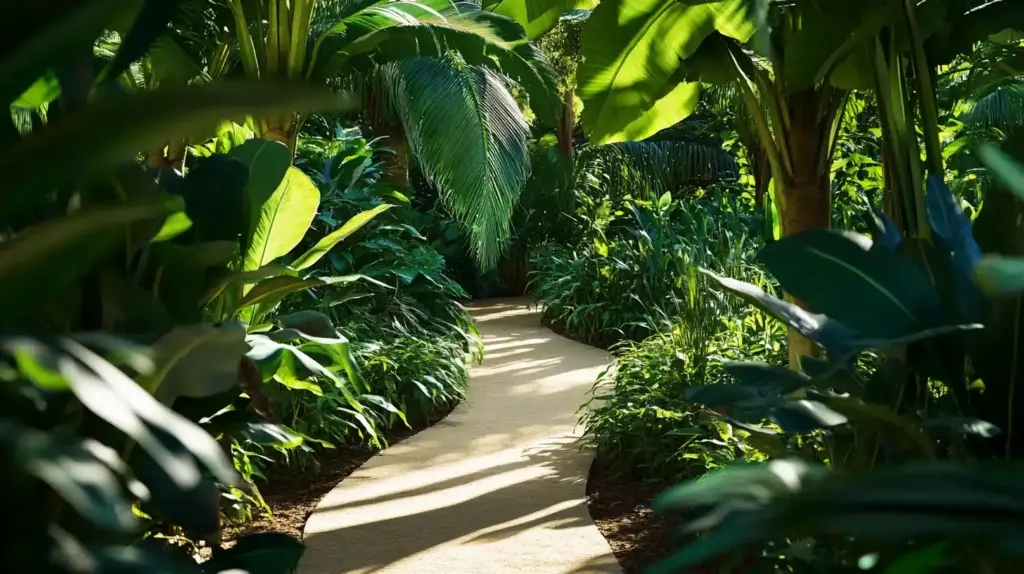
Not every vegetable thrives in full sun, which is why shade gardening is one of the smartest vegetable garden ideas—especially in warmer climates or tree-covered yards. By using partial or dappled sunlight, you can grow cool-weather crops that prefer less heat and more moisture.
Lettuce, spinach, arugula, and radishes all do well in shaded areas, producing crisp, tender leaves even during the height of summer. Consider placing these crops near buildings, fences, or under taller plants to create natural shade. Embracing the shade not only expands your planting potential but also keeps your garden productive when temperatures rise.
10. Succession Planting Strategies
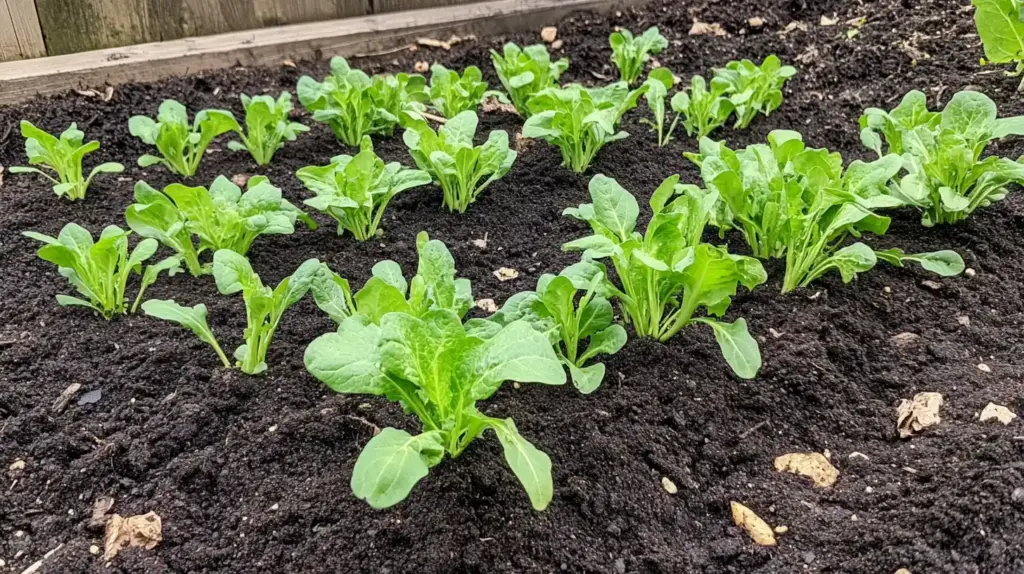
To keep your garden continuously productive, few vegetable garden ideas are as efficient as succession planting. Instead of planting everything at once, this method involves staggering your sowing times so that as one crop finishes, another is ready to take its place.
This approach helps extend your harvest season, minimize pest buildup, and maintain soil fertility throughout the growing period. For example, after harvesting spring radishes, you can follow up with summer beans, and later transition to fall carrots. With a little planning and a planting calendar, your small garden can yield fresh produce for months without ever sitting idle.
Frequently Asked Questions (FAQ)
What vegetables grow best in small gardens?
Some of the best vegetables for small spaces include cherry tomatoes, lettuce, spinach, radishes, bush beans, carrots, and herbs like basil and parsley. These crops grow quickly and don’t require much room, making them ideal for containers and raised beds.
How can I make my small vegetable garden look more attractive?
Incorporate vertical elements like trellises, use colorful vegetables such as rainbow chard, and edge beds with edible flowers. Arranging your plants by height and adding pathways or decorative containers can also improve the visual appeal.
Can I grow vegetables without a backyard?
Absolutely. Container gardening, vertical planters, window boxes, and balcony setups are great vegetable garden ideas for people without traditional garden space. All you need is sunlight and good soil.
How often should I water a small vegetable garden?
Most vegetables need consistent moisture—generally, 1 inch of water per week, including rainfall. In containers or raised beds, water more frequently, especially in hot or windy conditions.
What is the easiest vegetable to grow for beginners?
Leafy greens like lettuce, spinach, and arugula are very beginner-friendly. They germinate quickly, don’t require a lot of care, and can even thrive in partial shade.
Conclusion
Creating a productive garden in a small space doesn’t mean sacrificing variety, beauty, or yield. With these creative vegetable garden ideas, you can design a space that’s efficient, attractive, and full of life. From vertical solutions to edible landscapes and succession planting, there’s a strategy to suit every skill level and layout. Start with just one or two ideas and watch how your garden transforms into a thriving, edible sanctuary—right in your backyard, balcony, or patio.
🌿 Love gardening inspiration? Follow me on Pinterest for bold plant ideas, tips, and seasonal color!
More Posts
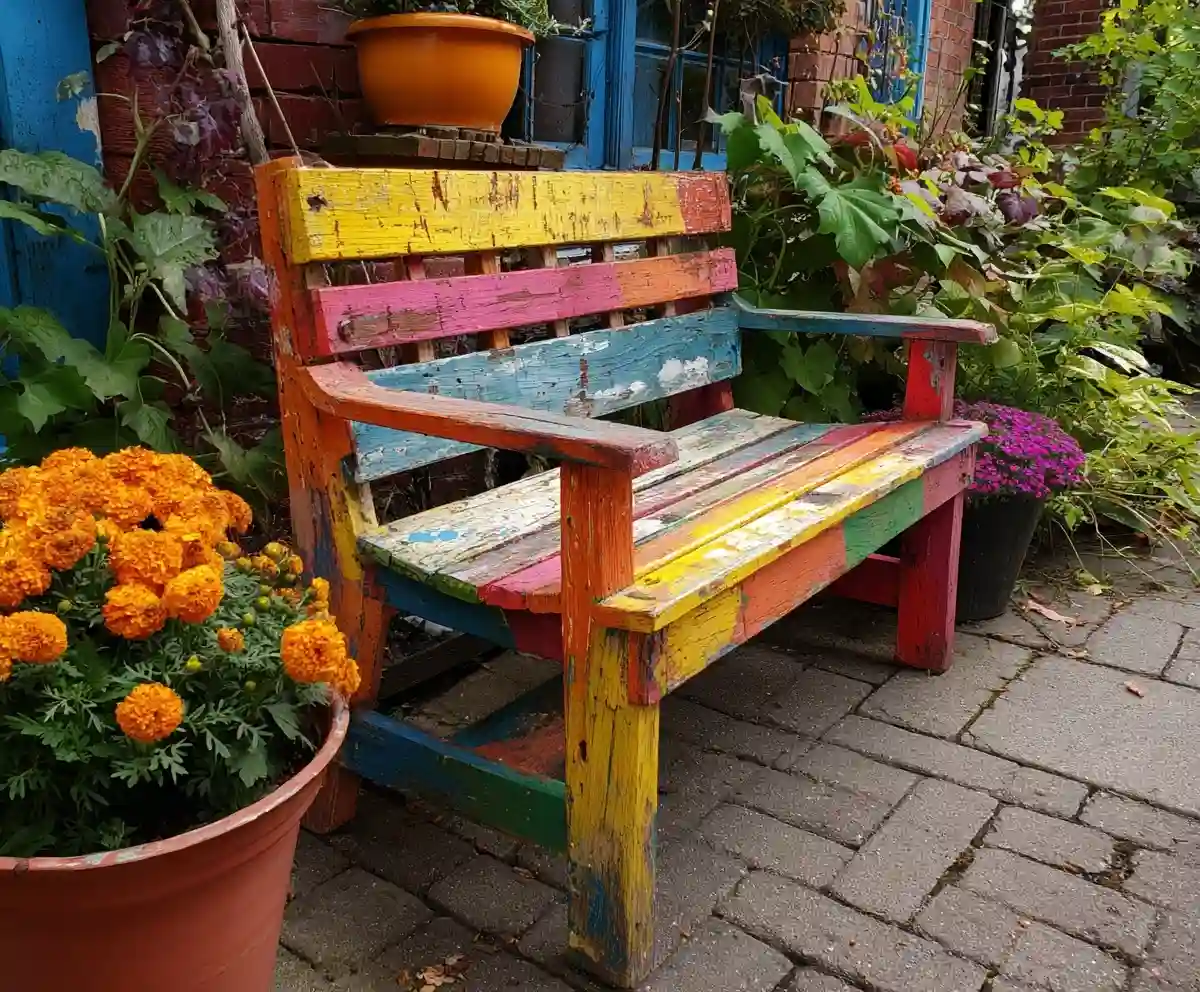
19+ Budget-Friendly Backyard Makeover Ideas
Backyard makeover ideas can turn even the most ordinary outdoor space into a warm, inviting retreat—without draining your wallet.
Read More →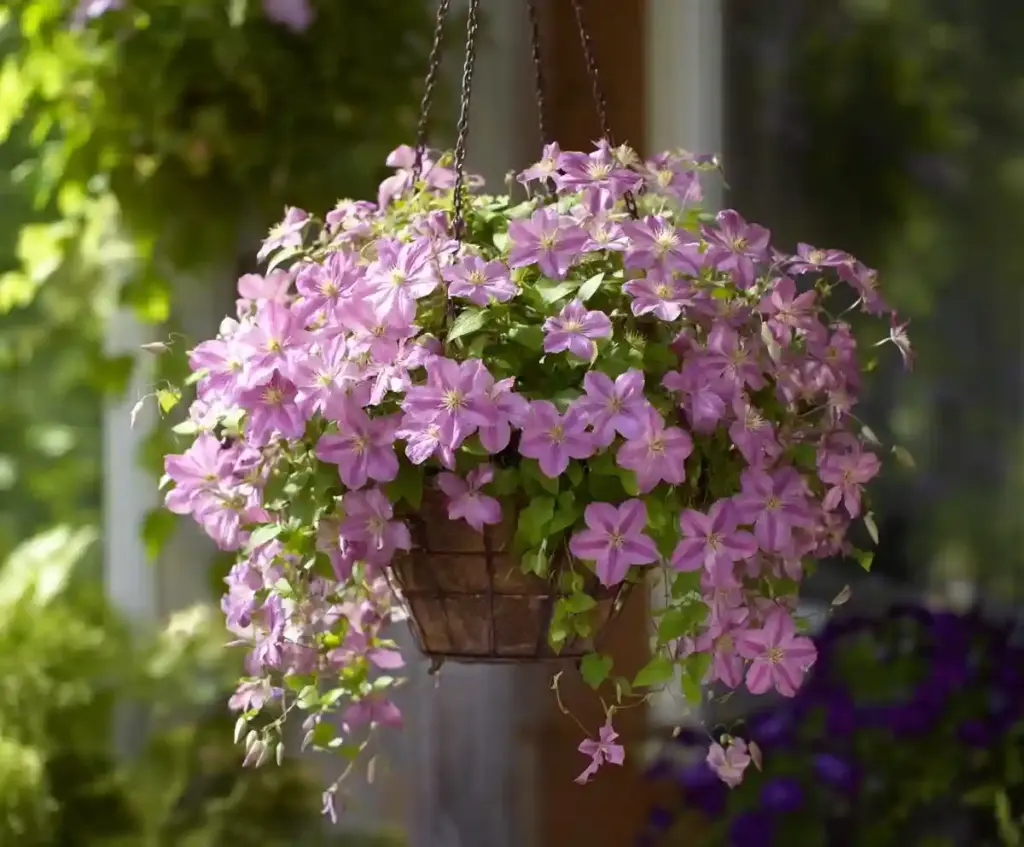
21 Stunning & Simple DIY Clematis Trellis Designs
DIY clematis trellis designs are a beautiful way to blend creativity with function in your garden.
Read More →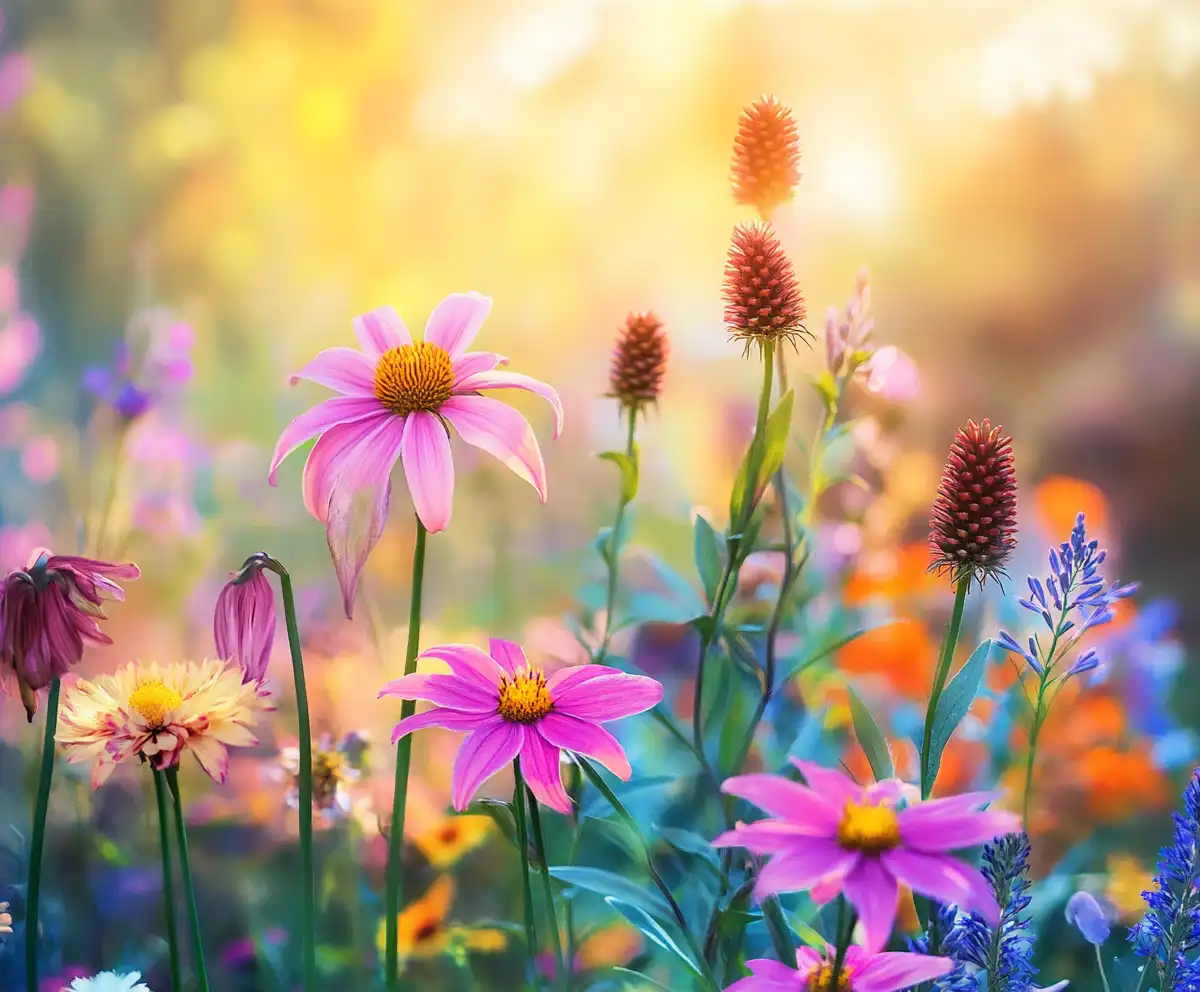
12 Full Sun Perennials That Bloom All Summer
Explore a selection of hardy perennials that flourish and bloom beautifully in full sun throughout the summer.
Read More →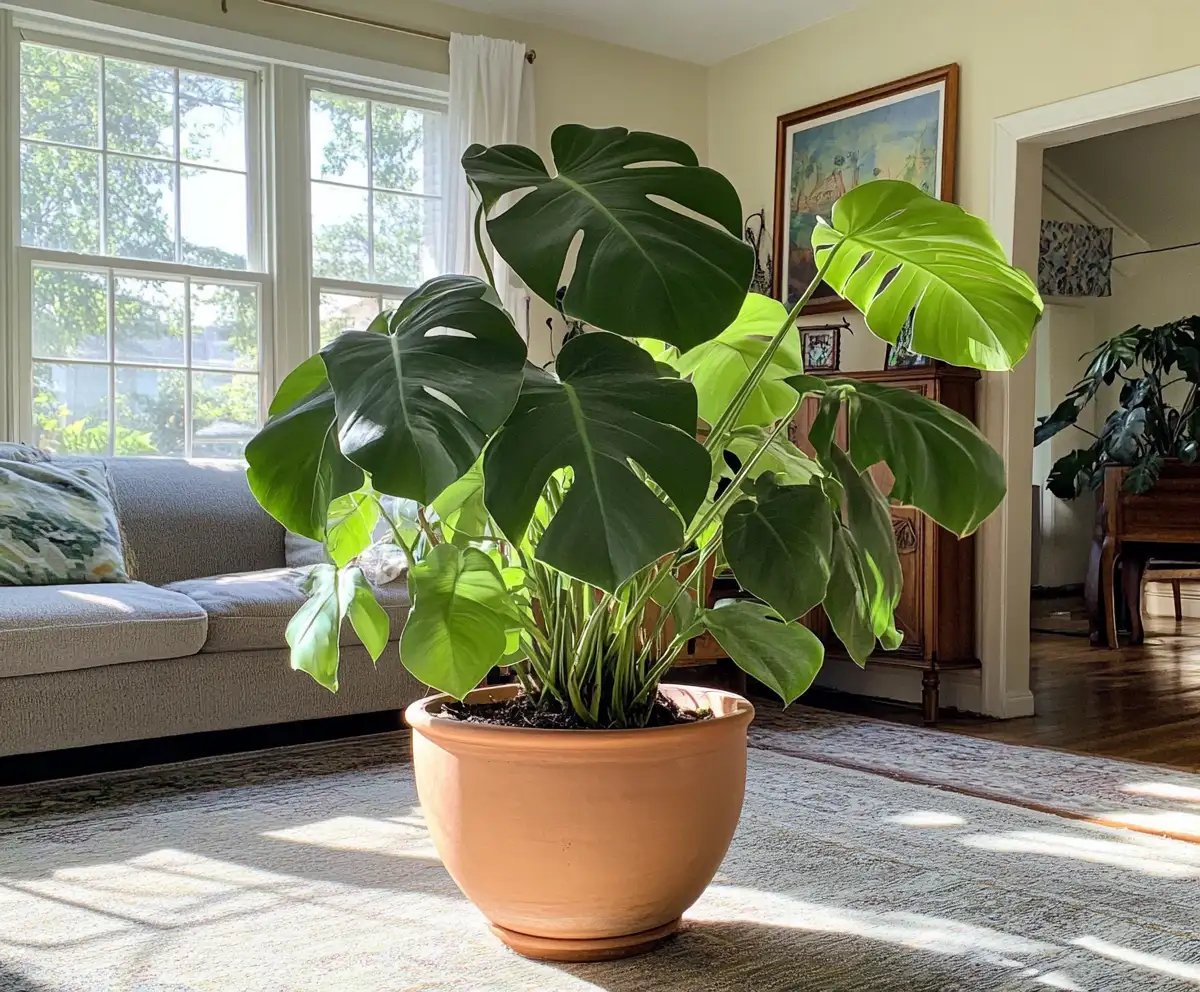
Houseplants for Living Room
Find the perfect houseplants to brighten and purify your living room while adding a touch of nature indoors.
Read More →
Backyard Play Area for Kids
Create a fun and safe backyard play area for kids with these inspiring design ideas and tips.
Read More →
Top Privacy Trees
Discover top tree varieties that provide natural privacy and enhance your outdoor space.
Read More →
